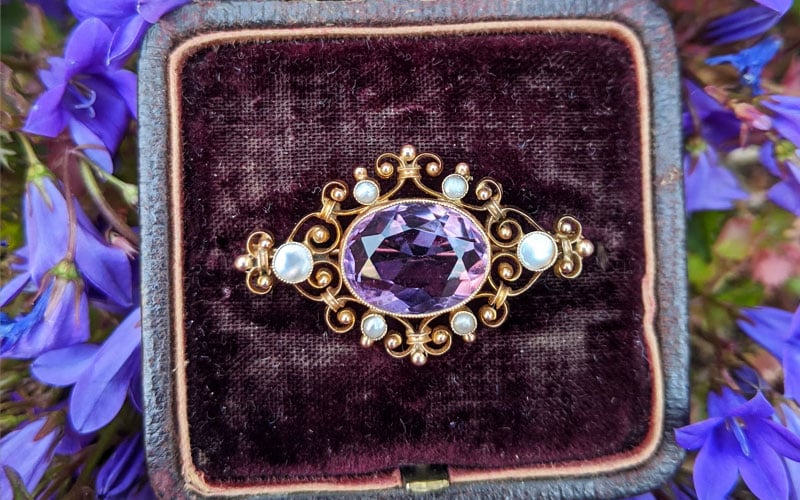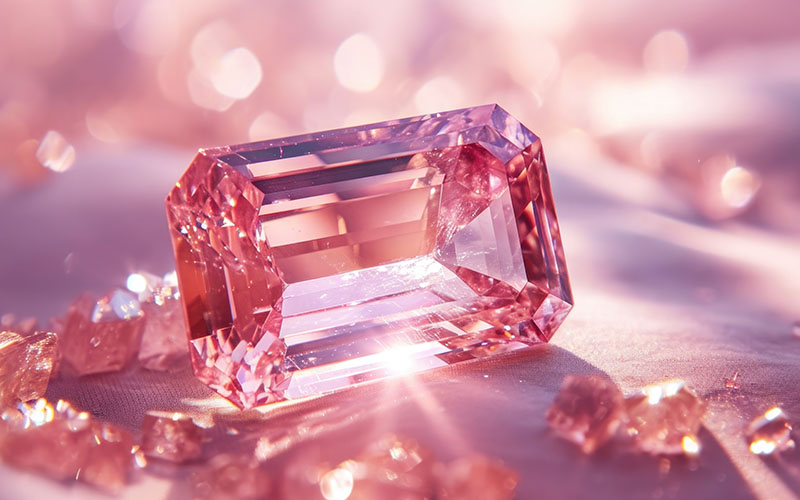Amethyst, the birthstone of February, has a history steeped in legend and lore and has enchanted civilizations for centuries. With its striking purple hues, it has become not only a symbol of beauty but also holds deep symbolic meanings across various cultures.
History
The history of amethyst traces back thousands of years, with earliest known uses dating back to ancient Egypt and Greece. The name “amethyst” originates from the Greek word “amethystos,” which translates to “not intoxicated.” Ancient Greeks believed that wearing or drinking from vessels made of amethyst could protect one from drunkenness, a belief stemming from the stone’s association with Dionysus, the god of wine. Moreover, it was also believed to have healing properties, promoting clarity of mind and emotional balance.

Symbolism
Amethyst has a rich historic association with spirituality, wisdom, and clarity. In the Middle Ages, amethyst was highly valued by royalty and clergy. It was believed to have healing powers and was often used in religious jewelry and ornaments. It was also believed to have protective powers and was worn by soldiers in battle. The stone is said to enhance intuition and psychic abilities, and it is frequently employed in chakra healing and balancing. It has an association with the crown chakra, which is the center of spiritual awareness and connection to the divine.

Amethyst and other types of quartz were used in the past by Buddhist monks to heal and diagnose diseases. Monks in Tibet continue to incorporate amethyst in their prayer beads. The beads are used during prayer and meditation to aid in concentration, as the stone is considered calming to the mind. The friendly purple gemstone continues to be used in meditation and spiritual practices in many places around the world. The rich purple color of amethyst has also been associated with royalty, luxury, and mysticism, making it a popular choice for adornment among nobles and monarchs.

Availability
Today, amethyst is widely available, with major deposits found in countries such as Brazil, Uruguay, Zambia, and Russia. Its abundance and relatively affordable price make it accessible to a wide range of consumers, from collectors to jewelry enthusiasts. From exquisite rings to statement necklaces, amethyst continues to be a favored gemstone in the world of jewelry design, adorning pieces with its mesmerizing beauty.

So celebrate, February babies!
Amethyst’s journey through history is as rich as its royal color. From its mythical origins to its widespread availability today, it remains a gemstone cherished for its beauty, symbolism, and diverse cultural significance. Whether worn for its purported metaphysical properties or admired for its aesthetic appeal, the allure of amethyst continues to captivate hearts and minds around the globe




